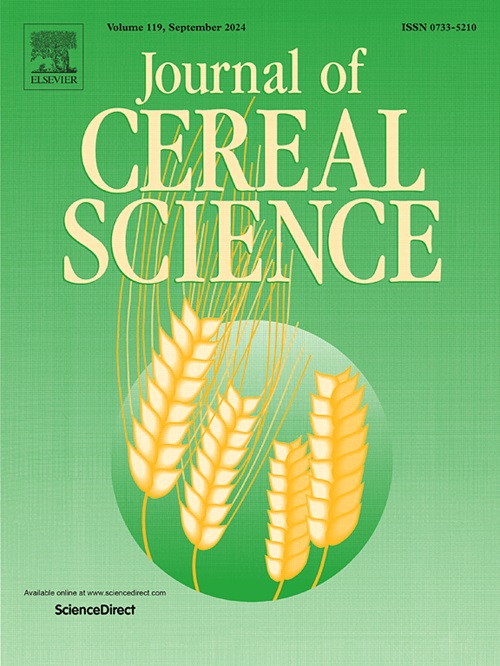Impact of germination time and temperature on starch viscosity properties and chemical composition of intermediate wheatgrass (Thinopyrum intermedium)
IF 3.9
2区 农林科学
Q2 FOOD SCIENCE & TECHNOLOGY
引用次数: 0
Abstract
Intermediate wheatgrass, a perennial grain, has been explored in recent years for potential human use due to the environmental advantages it offers. As consumers are driven towards health-conscious food choices, sprouted grain products have also become increasingly popular in the market, available in forms of bakery products, breakfast bars, and other cereal products. This study investigates the effect of germination conditions of intermediate wheatgrass on the chemical composition and functionality of the final product. Explored conditions included germination periods of 2, 4, and 6 days and germination temperatures of 10, 15, and 20 °C. Protein content was not significantly affected by germination. Ash content was observed to decrease in all germination conditions explored in this study, potentially due to the washing of the grains. Starch content was lowest for samples germinated at 20 °C for 6 days. Analysis of pasting properties revealed germination time and temperatures to be inversely related to peak pasting viscosity while setback decreased along with longer germination time. Germination time and temperature had significant impact (p < 0.05) on the break down property of the starch as well. The recommended germination condition for intermediate wheatgrass from this study is between 2 and 4 days at temperatures between 15 °C and 20 °C, depending on the intended application.
萌发时间和温度对中间麦草(Thinopyrum intermedium)淀粉粘度特性和化学成分的影响
中间体小麦草是一种多年生谷物,由于其环境优势,近年来已被探索用于潜在的人类利用。随着消费者越来越注重健康的食品选择,发芽谷物产品在市场上也越来越受欢迎,以烘焙产品、早餐棒和其他谷物产品的形式出现。本研究考察了小麦中间草萌发条件对最终产品化学成分和功能的影响。研究条件包括萌发期2、4和6天,萌发温度为10、15和20℃。发芽对蛋白质含量影响不显著。在本研究中发现的所有发芽条件下,灰分含量都有所下降,可能是由于籽粒洗涤所致。在20℃萌发6天的样品淀粉含量最低。膏体特性分析表明,萌发时间和温度与膏体粘度峰值呈负相关,而挫折值随着萌发时间的延长而降低。萌发时间和温度对其影响显著(p <;0.05)对淀粉的分解特性也有影响。本研究推荐的中间小麦草发芽条件为2至4天,温度在15°C至20°C之间,具体取决于预期的应用。
本文章由计算机程序翻译,如有差异,请以英文原文为准。
求助全文
约1分钟内获得全文
求助全文
来源期刊

Journal of Cereal Science
工程技术-食品科技
CiteScore
7.80
自引率
2.60%
发文量
163
审稿时长
38 days
期刊介绍:
The Journal of Cereal Science was established in 1983 to provide an International forum for the publication of original research papers of high standing covering all aspects of cereal science related to the functional and nutritional quality of cereal grains (true cereals - members of the Poaceae family and starchy pseudocereals - members of the Amaranthaceae, Chenopodiaceae and Polygonaceae families) and their products, in relation to the cereals used. The journal also publishes concise and critical review articles appraising the status and future directions of specific areas of cereal science and short communications that present news of important advances in research. The journal aims at topicality and at providing comprehensive coverage of progress in the field.
 求助内容:
求助内容: 应助结果提醒方式:
应助结果提醒方式:


